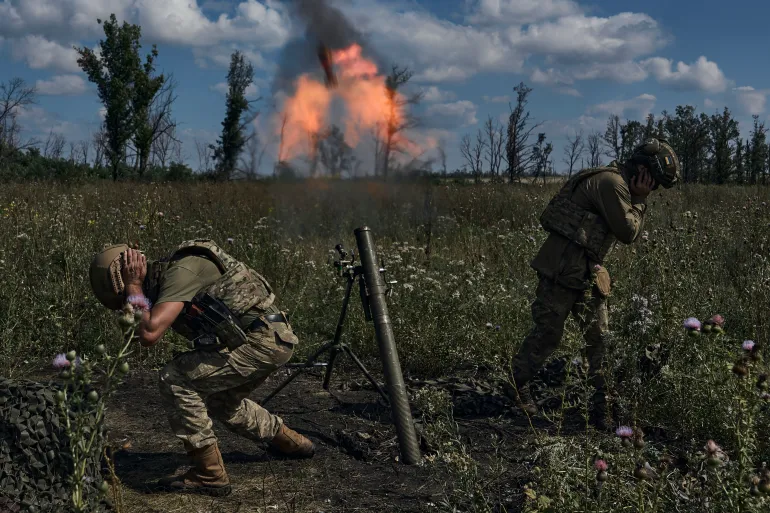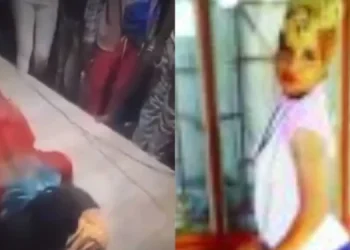A critical juncture has been reached in Ukraine’s months-long counteroffensive. After weeks of difficult battles, Ukrainian forces have slowly edged south in the Zaporizhia region, taking hamlet after hamlet as Russian forces try to keep them at bay.
The counteroffensive in the south is just one part of a significant push along a vast front line, stretching from Vasilivka in Zaporizhia to the city of Donetsk in the eastern region of Donbas and up to Bakhmut, a city north of Donetsk to the outskirts of Kupiansk in northeastern Ukraine. This does not even include the strikes and raids on Crimea and from across the Dnipro River from the city of Kherson to the Black Sea.
There has been widespread speculation that somehow Ukraine’s advance in the south has stalled or at the very best been limited. In reality, its soldiers have had to make their way across open ground through a maze of well-placed fortified positions and trenches.
The surrounding area is heavily mined and likely approaches are covered by Russian heavy artillery and missile batteries.
Movement can be easily spotted in the distance as drones tirelessly monitor the battlefield.
This interlocked, carefully prepared fortified line is what Ukrainian forces have been deliberately advancing through for months.
Casualties have been high on both sides but would have been far greater on the Ukrainian side if its commanders had rushed it.
Now, finally, these first defensive lines have been breached. The Zaporizhia village of Robotyne has been taken, and the next hamlet, Novoprokopivka, is in Ukraine’s sights with Tokmak, one of its strategic objectives, now within reach.
Tokmak is a vital railway junction and the key to taking the city of Melitopol at the neck of the Crimean Peninsula. It is less than 20km (12.4 miles) behind the front line and surrounded by its own defensive ring. Approaches to the town are heavily fortified, the Russians proving adept at making Ukraine pay for every kilometre taken.
Russian military logistics depends heavily on the rail system, but this network is under increasing attacks not just from Ukrainian artillery but also from precision strike by HIMARS rocket batteries and Storm Shadow cruise missiles.
The Russian military realises Tokmak’s importance and has heavily reinforced its units there. Ukrainian forces can choose to directly assault the town, with its implication of high casualties, or go around it, which would result in it being surrounded and cut off. Either way, the town’s rail line would be cut.
Ukrainian forces this far south will then be able to destroy targets round Melitopol, putting pressure on Russian troops there and threatening Russian units protecting the near bank of the Dnipro with encirclement.
Cut off from the rest of their logistics supply chain, these units would quickly run out of ammunition and fuel as all storage dumps are being systematically destroyed by Ukrainian long-range precision fire.
Ukrainian military planners have been thinking further ahead and methodically targeting bridges and railway depots much farther away from the battlefield in Crimea itself.
The Kerch Strait Bridge, which connects Crimea with Russia, was attacked and damaged in July, and weeks later, the road and rail bridges at Chonhar, joining Crimea to the Ukrainian mainland, were badly damaged by missile strikes.
While the southern front is the most important for Ukraine, its military has been adept at keeping Russian high command struggling to guess where the decisive assault will come from. In the east, Ukrainian units easily retook the areas round Bahmut, which cost the Russians so dearly over the previous 18 months.
The city of Donetsk, the linchpin for the southern and eastern fronts, is being pressured by Ukrainian forces on two sides while farther west, Ukraine has made gains pushing south, taking Staromayorske.
Extensive raids have been conducted on the near bank of the Dnipro, and even a daring commando raid successfully attacked targets in Crimea on August 24, Ukraine’s Independence Day.
All this serves to muddy Russia’s strategic picture, allowing Ukraine to pick where and when it wants to fight and keeping Russia on the defensive.
Source Aljazeera












